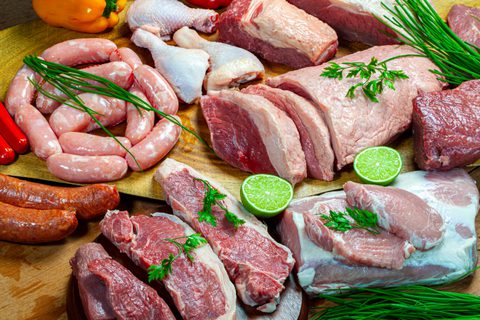

The Power of Enzymes: Why Hydrolysing Proteins Matters
In the world of biology and biochemistry, the process of hydrolysing proteins using enzymes plays a crucial role in industrial applications, with significant environmental benefits. As we look further into protein hydrolysis, we can understand why it's so essential.
What is Protein Hydrolysis?
Protein hydrolysis is the process of breaking down proteins into their constituent amino acids through the addition of water molecules. Enzymes, specialised proteins that act as biological catalysts, facilitate this process. The enzymes responsible for protein hydrolysis are called proteases or peptidases.
Protein hydrolysis offers a plethora of benefits in food manufacturing:
Improved Digestibility: Hydrolysing proteins can make them easier to digest for individuals with sensitive stomachs or digestive issues. By breaking down complex proteins into smaller, more digestible fragments, hydrolysis can enhance the nutritional quality of food products and promote better nutrient absorption.
Enhanced Flavour: Hydrolysis can lead to the release of savoury, umami compounds, contributing to richer and more intense flavours in food products. This is particularly evident in savoury snacks, soups, sauces, and meat products, where hydrolysed proteins are commonly used as flavour enhancers.
Texture Modification: Hydrolysed proteins can impart desirable texture attributes to food products, such as improved mouthfeel, creaminess, and smoothness. This is especially valuable in the formulation of beverages, dairy products, and protein-fortified foods where texture plays a crucial role.
Increased Nutritional Value: Hydrolysing proteins can release bioactive peptides and amino acids with potential health benefits, such as antioxidant, antimicrobial, and antihypertensive properties. These bioactive compounds can enhance the nutritional profile of food products and contribute to overall health and wellness.
Allergen Reduction: Hydrolysis can reduce the allergenicity of certain proteins by breaking them down into smaller fragments that are less likely to trigger allergic reactions. This is particularly important in the production of hypoallergenic infant formulas, gluten-free products, and other allergen-reduced foods.
Stability and Shelf Life: Hydrolysed proteins often exhibit improved stability and shelf life compared to their native counterparts. The breakdown of proteins into smaller peptides can reduce susceptibility to degradation by enzymes, oxidation, and other factors, thereby prolonging the shelf stability of food products.
Functional Properties: Hydrolysed proteins can exhibit enhanced functional properties, such as emulsification, foaming, and gelation, which are valuable in food formulation and processing. These functional attributes make hydrolysed proteins versatile ingredients in a wide range of food applications, from bakery and confectionery to meat and seafood products.

Protein hydrolysis doesn’t just have extensive benefits in food manufacturing, it can be used for industrial applications:
Detergent Industry: Proteases are key components in laundry detergents, where they aid in the removal of protein-based stains, such as blood, sweat, and grass, by breaking down the protein molecules into smaller, soluble fragments that can be easily washed away.
Pharmaceuticals: Protein hydrolysis is utilised in the pharmaceutical industry to manufacture peptide-based drugs. Enzymatic cleavage of larger protein molecules produces bioactive peptides with therapeutic properties, such as insulin for diabetes treatment or enzyme inhibitors for managing various medical conditions.
Environmental Benefits
Enzymatic protein hydrolysis offers several environmental advantages compared to traditional chemical methods:
Mild Conditions: Enzymes operate under mild conditions of temperature and pH, reducing energy consumption and minimising environmental impact.
Specificity: Enzymes exhibit high substrate specificity, targeting only the proteins of interest and avoiding the generation of unwanted by-products.
Biodegradability: Unlike chemical catalysts, enzymes are biodegradable and pose minimal risk of environmental pollution.

Conclusion
In summary, protein hydrolysis using enzymes is a fundamental biological process with far-reaching implications in food production, industrial manufacturing, and environmental sustainability. By harnessing the power of enzymes, we can efficiently break down proteins into their building blocks, unlocking their potential for nutrition, medicine, and innovation. As we continue to explore and optimise enzyme technologies, the possibilities for leveraging protein hydrolysis will only continue to expand, shaping a brighter and more sustainable future.
